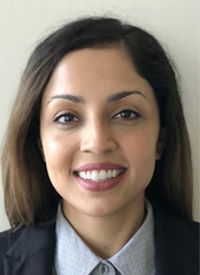Personalized Medicine in a Time of Depersonalized Patient-Doctor Relationships
Gagandeep Brar, MD, reflects on patient interactions that she has encountered throughout her fellowship.
Gagandeep Brar, MD, associate professor of oncology and urology at Johns Hopkins Medicine

Gagandeep Brar, MD
I eagerly awaited the next patient to be put into a room. I had reviewed his large pile of medical records the night before and knew he was coming in to potentially enroll in a phase I/II clinical trial that was evaluating a new drug in patients with a specific actionable mutation. His tumor had developed this alteration as his metastatic disease worsened, which had already progressed through multiple lines of prior therapy. He came to us as a last resort.
As I walked into the room and greeted him and his wife, I vaguely caught a sense of anxiety but ignored it because I had more important things to discuss. After taking a history, which I already knew from the night before and upon finishing a complete physical exam, I launched into my usual sequence of discussion. I spoke about the natural history of this cancer type and what our trial entailed. I discussed that we didn’t know if this treatment would work or not, but the preclinical data were encouraging, and we were enrolling patients to determine dose and toxicity. I then went on to discuss the adverse effects (AEs) that we had seen thus far and, finally, ended with the overall poor prognosis of this disease. I then stated that if the treatment did not have the effect we were hoping for, altruistically enrolling into this trial could potentially help another patient in the future.
The patient nodded silently throughout my rehearsed monologue. His wife frantically wrote down notes without making eye contact, and I noted that her face was flushed and she was almost in tears. When asked if they had any questions, they both appeared overwhelmed, so I walked out of the room, passively stating that I would be back with the attending physician after we discussed his case. The patient ultimately enrolled onto our trial but over time, he progressed and died.
I reflect on this and similar patient interactions that I have encountered throughout my fellowship. On the one hand, I am on the cutting edge of research and have the opportunity to enroll patients into clinical trials involving experimental therapies, often stating that we are giving “tomorrow’s cure today.” I do believe that the future of oncology is now, and in my lifetime, I hope to see cancer cured.
On the other hand, I failed to truly recognize and understand the patients whom I treated. Somewhere during my short career, I had lost the ability to build genuine relationships with the person sitting in front of me. Sure, I knew everything about their oncologic history and the mechanisms behind tumorigenesis. I worked hard and long hours making sure each patient was properly cared for. I monitored for toxicities and managed AEs. But I knew nothing about a patient’s background, family, or values. I desensitized myself from my job. I later learned that this particular patient drove several hours to receive his treatment and had been laid off from work because of missed time. He had young children at home who did not know about his diagnosis or prognosis. His wife was barely able to cope with the unfortunate turn of events that had destabilized their livelihood, yet the patient remained stoic as a way to cope with his crumbling world.
I think this apathetic mentality develops as a coping method for oncologists when frequently exposed to death and dying. After all, we are people, too, each with set limitations of what we can psychologically handle. It is easy to keep patients at a distance and close ourselves off to feeling emotion when they die. It is overwhelming to open ourselves unconditionally and feel the effects of mortality on a regular basis. I used to think that oncologists were the “angels of death,” as patients often succumbed to their disease. I thought our role was simply to prolong life and, oftentimes, prolong suffering. This detachment led me astray from what my true focus should always have been— to help a person in need.
Learning from this case, we need to remember that building sincere and genuine patient—doctor relationships is just as important as treating their illness. We have a unique opportunity for a complete stranger to put their life in our hands, and we have the ability to provide comfort, hope, and assurance in a time of fear and doubt for a patient and their family. It isn’t easy, but remember that we are allowed to grieve. It’s not a failure or a fault to incorporate compassion with professionalism. Take time to get to know your patient and remember their life as they are. We treat people, not ID numbers.
Rachel Naomi Remen, MD, clinical professor of family and community medicine, University of California, San Francisco, School of Medicine has said: “The expectation that we can be immersed in suffering and loss daily and not be touched by it is as unrealistic as expecting to be able to walk through water without getting wet…We burn out not because we don’t care but because we don’t grieve.”




